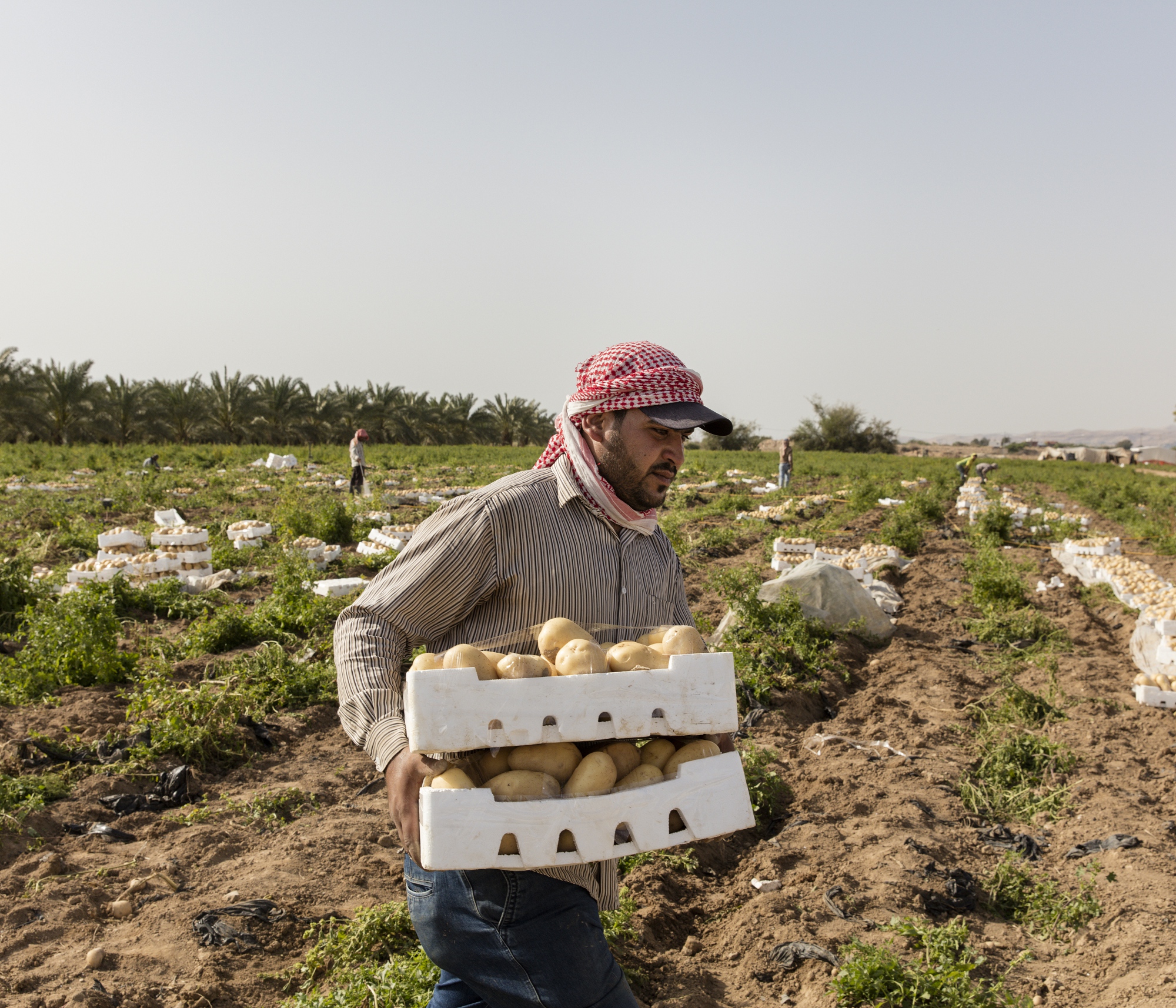Massive aid effort accompanied 2013's Syria refugee exodus
Massive aid effort accompanied 2013's Syria refugee exodus
AMMAN, Jordan December 31 (UNHCR) - Over 2013 the number of registered Syrian refugees grew to more than 2.3 million people, fracturing families and necessitating a massive international relief effort particularly targeting some 1.2 million refugee children to ensure they do not become a lost generation.
At the start of 2013 the Middle East hosted some 500,000 registered Syrian refugees, but a year later, as Syria approaches the end of its third year of conflict, dozens of refugee settlements are now clearly visible even from outer space.
To keep pace with 2013's alarming exodus more than 196,000 tents and 809,000 plastic tarpaulins were distributed to refugees residing in camps and informal sites -- equivalent to more than 21 square kilometers of shelter material.
Schools, child-friendly spaces and psycho-social support facilities were established in camps to help meet the needs of the refugees who continue to pour out of Syria at a rate of 127,000 people a month. Aid agencies expanded support to communities that host 80 percent of the Syrian refugees and which place an enormous burden on local health facilities, schools, water and sanitation.
The size and scale of the Syria crisis over 2013 required the concerted engagement of 147 relief agencies, the main host countries of Lebanon, Jordan, Turkey, Iraq and Egypt and the generosity of scores of donors. However, the UN's 2013 refugee response plan was only 68 percent funded.
Across the region at present, some 400,000 refugees currently live in formal camps, but nearly 2 million reside outside formal settlements, testifying to the hospitality offered by host countries.
Families lacking financial resources often send their children to work to ensure survival. In both Jordan and Lebanon, UNHCR found children as young as seven years working long hours for little pay, sometimes in dangerous or exploitative conditions. In some settlements up to 43 percent of the refugee households are headed by women.
To ensure adequate protection and provide documentation, refugee registration efforts were expanded over 2013, reducing waiting times to only a matter of hours. Mobile registration teams were also established to better reach unregistered Syrian exiles.
An estimated 4.1 million Syrian refugees will need assistance by the end of 2014, including 2 million children. Agencies are calling for strong donor support ahead of the 15 January Kuwait II pledging conference for Syria; agencies are appealing for $2.3 billion for activities within Syria and $4.2 billion to address the needs of refugees.
As Syria's refugee exodus has grown, the number of formal camps across the region has doubled, from 19 camps a year ago to 37 at present. Turkey currently has 21 camps, Iraq has 12 camps and transit sites and Jordan currently has three camps with a fourth site ready to host up to 100,000 new arrivals.
Lebanon, with limited absorption capacity, hosts the largest number of Syrians in the region with over 850,000 refugees registered or awaiting registration who live in non-camp settings spread across 1,700 locations that host more than 120,000 exiles.
Over 2013 agencies distributed of more than 5.7 million blankets and quilts along with 4.9 million mattresses. To ensure the preparation of food and meet other basic needs, some 870,000 kitchen sets and a similar number of jerry cans were distributed. With tens of thousands of infants forced to flee with their families, nearly 5 million diapers were given out.
National and international NGO partners along with local charities provided further quantities of relief items and vital programming to assist and protect needy refugees. UNICEF distributed tens of thousands of winter outfits and footwear to refugees as well as providing schools, psycho-social support and vaccination, education, water and sanitation projects. The UN World Food Programme ensured food aid was available to needy refugees in the form of food vouchers, e-cards and direct distribution of food relief. Amongst the host of UN and other agencies working to address the displacement crisis, the International Organisation for Migration provided transport services for newly arrived refugees while the World Health Organisation led efforts to combat polio and other diseases. The UN Relief and Works Agency for Palestine refugees worked to meet the needs of persons under its mandate caught up in the conflict.
For the winter cold season UNHCR earmarked $138 million to provide additional weatherproofing, initiatives to insulate tents from the ground, winterization of water and sanitation facilities, drainage works, the distribution of additional thermal blankets, mattresses, stoves, clothing and fuel, heating education facilities and cash grant schemes. More than 78,000 families received stoves while tens of thousands of other families benefited from cash assistance to purchase heaters on the local market. Electrification efforts were extended in most camps and fuel was distributed.
Ahead of winter more than 17,000 caravans were delivered to Jordan's Za'atri camp, the vast majority contributed by Gulf State donors. All of Za'atri's 80,000 residents should be in hard shelter by early 2014. Cash assistance programmes targeting Jordan's urban refugees reached some 110,000 people using advance biometric technology. The government of Turkey similarly provided almost 12,000 caravans to refugees in its camps. Winter aid initiatives were likewise implemented in Turkey and Iraq, which respectively host 557,000 and 210,000 refugees, as well as in Egypt, where 131,000 Syrians are registered with UNHCR.
UNHCR works within Syria to aid internally displaced persons and over 2013 it reached more than 3.2 million people in all of Syria's 14 governorates, delivering more than 8 million various core relief items.
This winter the agency is implementing a $79 million plan inside Syria to help 1.5 million internally displaced persons by providing relief items like thermal blankets, mattresses and tarpaulins, renovating 89 collective shelters and distributing cash assistance to thousands of vulnerable families.









